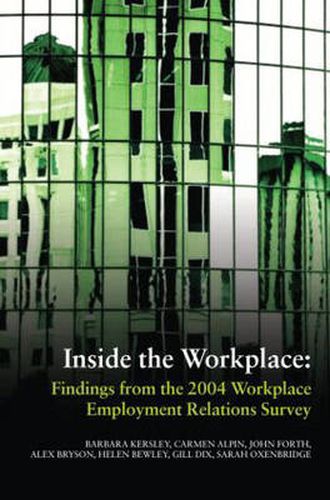Readings Newsletter
Become a Readings Member to make your shopping experience even easier.
Sign in or sign up for free!
You’re not far away from qualifying for FREE standard shipping within Australia
You’ve qualified for FREE standard shipping within Australia
The cart is loading…






Based on the primary analysis of the 2004 Workplace Employment Relations Survey (WERS 2004), this is the fifth book in the series which began in 1980. A large-scale and complex project, it consists of four discrete surveys, face-to-face interviews with around 3,400 managers and 1,200 worker representatives, plus completed questionnaires from approximately 30,000 employees. It is designed to be representative of all employees in Britain, with the exception of those in workplaces with less than five employees. This book provides a descriptive mapping of employment relations examining the principal features of the structures, practices and outcomes of workplace employment relations. The reader can examine differences according to the characteristics of the workplace and organization, including workplace size, industrial sector, and ownership. A key reference from a respected and important institution, this book will be a valuable ‘sourcebook’ for students, academics and practitioners in the fields of employee relations, human resource management, organizational behaviour and sociology. With an accompanying website, it includes up to the minute research delivered by the DTI and is a unique and important contribution to the subject area.
$9.00 standard shipping within Australia
FREE standard shipping within Australia for orders over $100.00
Express & International shipping calculated at checkout
Based on the primary analysis of the 2004 Workplace Employment Relations Survey (WERS 2004), this is the fifth book in the series which began in 1980. A large-scale and complex project, it consists of four discrete surveys, face-to-face interviews with around 3,400 managers and 1,200 worker representatives, plus completed questionnaires from approximately 30,000 employees. It is designed to be representative of all employees in Britain, with the exception of those in workplaces with less than five employees. This book provides a descriptive mapping of employment relations examining the principal features of the structures, practices and outcomes of workplace employment relations. The reader can examine differences according to the characteristics of the workplace and organization, including workplace size, industrial sector, and ownership. A key reference from a respected and important institution, this book will be a valuable ‘sourcebook’ for students, academics and practitioners in the fields of employee relations, human resource management, organizational behaviour and sociology. With an accompanying website, it includes up to the minute research delivered by the DTI and is a unique and important contribution to the subject area.